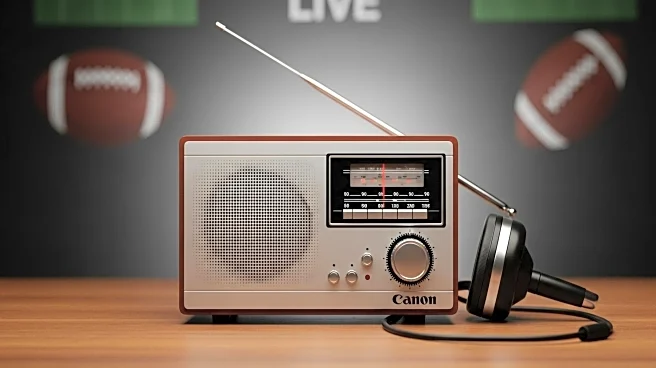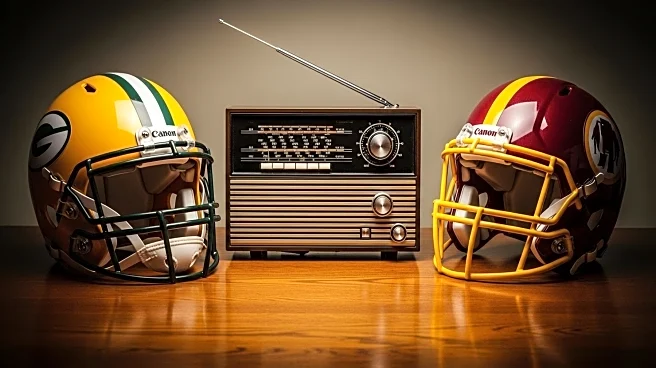What's Happening?
Week 2 of the NFL season is underway, offering fans a variety of exciting matchups. While games are available for viewing on television and streaming platforms, fans can also listen to live broadcasts via SiriusXM radio. Each of the 32 NFL teams has its own radio network, providing coverage across local and regional stations. SiriusXM offers new subscribers a four-month free trial, allowing them to listen to live broadcasts of NFL, NBA, MLB, NHL games, and more. The radio schedule includes games such as Commanders vs. Packers, Patriots vs. Dolphins, and Browns vs. Ravens, among others. This service is particularly useful for fans who prefer audio coverage while commuting or engaging in other activities.
Why It's Important?
Radio broadcasts provide an alternative way for fans to engage with NFL games, especially for those who may not have access to television or streaming services. This accessibility is crucial for maintaining fan engagement and expanding the reach of the NFL. The availability of radio broadcasts ensures that fans can stay connected to their favorite teams and games, regardless of their location or circumstances. Additionally, SiriusXM's offering of a free trial period can attract new listeners, potentially increasing its subscriber base and enhancing its market presence in sports broadcasting.
What's Next?
As the NFL season progresses, fans can expect continued coverage of games through various media platforms, including radio. SiriusXM may continue to offer promotions to attract new subscribers and retain existing ones. The NFL's partnership with radio networks will likely remain a key component of its strategy to reach diverse audiences. Fans can anticipate more exciting matchups and the opportunity to follow their teams throughout the season via radio broadcasts.
Beyond the Headlines
The use of radio for sports broadcasting highlights the importance of traditional media in the digital age. While streaming services and television dominate sports coverage, radio remains a vital medium for reaching audiences who prefer audio content or have limited access to visual media. This underscores the adaptability of sports broadcasting in catering to varied consumer preferences and technological advancements.











